All-out efforts needed to address low fertility rate, experts say
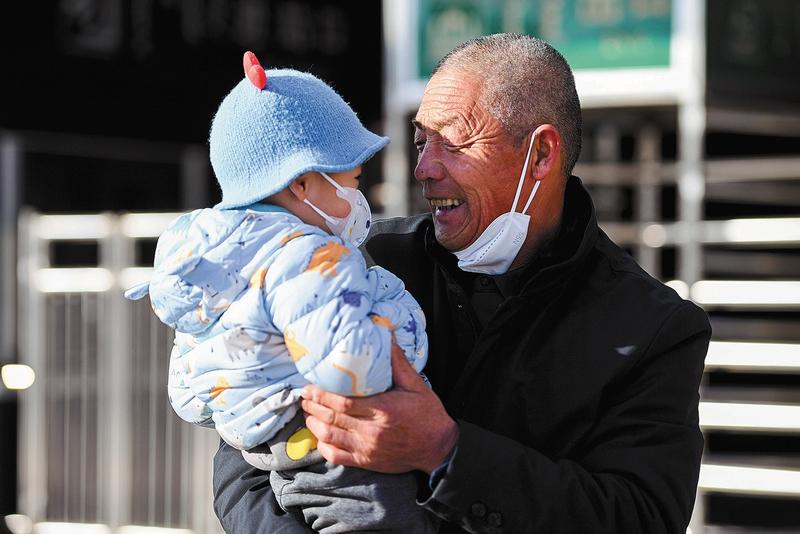 A man hugs his grandson at a railway station in Hohhot, Inner Mongolia autonomous region. (PHOTO / XINHUA)
A man hugs his grandson at a railway station in Hohhot, Inner Mongolia autonomous region. (PHOTO / XINHUA)
For Zhou Liping, an obstetrics nurse in Jiangsu province, the Spring Festival holiday last month was much quieter than in past years.
"About 50 babies used to be delivered at Wuxi People's Hospital, where I work, during the weeklong holiday, but there were only around 20 deliveries this year," she said.
Zhou, who has practiced midwifery in Jiangsu for more than four decades, said that previously cots had to be placed temporarily in hallways to accommodate growing numbers of expectant mothers during the busiest times.
"I doubt that such scenes will be repeated anytime soon. The number of pregnant women visiting us for prenatal testing has dropped markedly, meaning fewer newborns in the future," she said.
Zhou's comments shed light on the issue of China's dwindling population, which is due to falling numbers of newborns. Last year, the population fell by 850,000 to around 1.41 billion — the first decline since 1961.
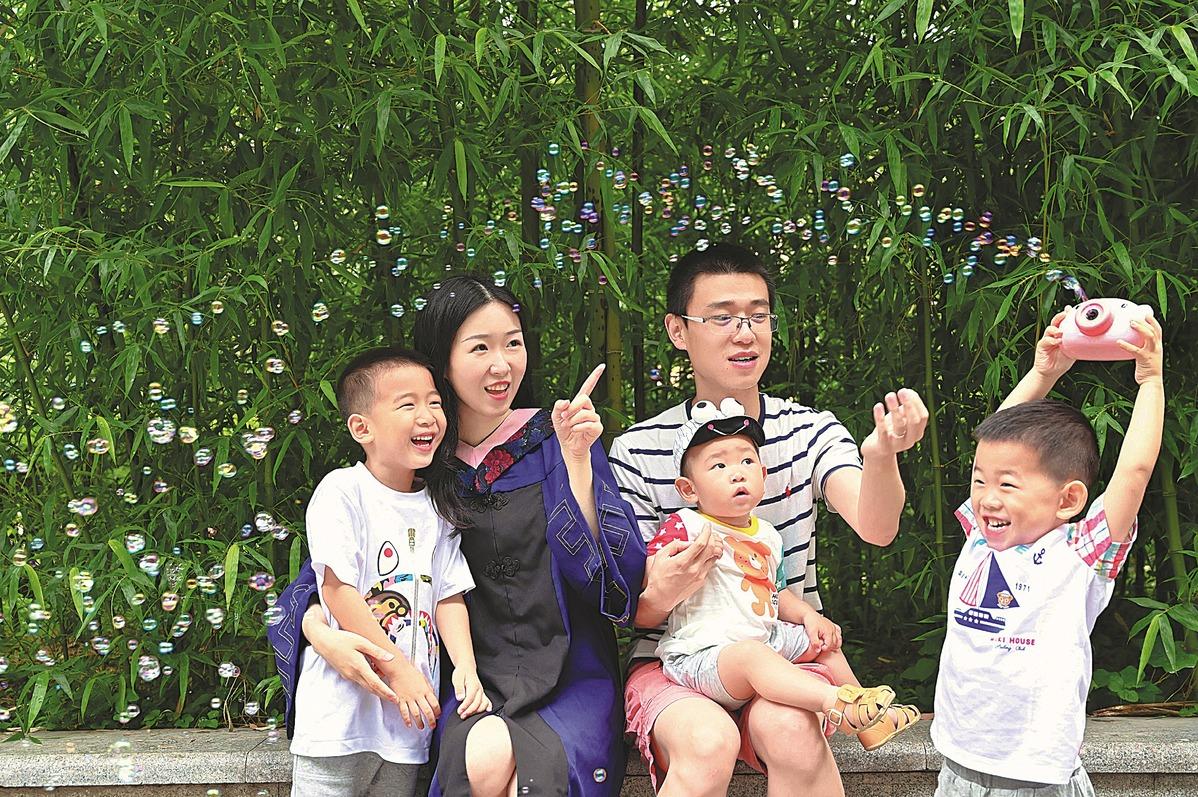 A family pose for a photo at the Central University of Finance and Economics in Beijing. (PHOTO PROVIDED TO CHINA DAILY)
A family pose for a photo at the Central University of Finance and Economics in Beijing. (PHOTO PROVIDED TO CHINA DAILY)
Experts said that all-out efforts must be made to raise the low fertility rate so as to counter the persistent downward trend and avert a sharp population decline in the long term.
Measures strongly advocated by experts and families include relieving the burden of raising children by providing stronger financial incentives, while nurturing a desire among the younger generation for marriage and to have children.
Yuan Xin, a demography professor at Nankai University in Tianjin, said the annual disparity between the number of newborns and deaths will not be sharply defined in coming years, but the nation will witness a decline in its total population for decades to come.
"Negative population growth is an inevitable result of a persistently low fertility rate. China has had a low fertility rate for more than 30 years," he said.
Official data show there were some 9.56 million births in China last year, the first time the figure had fallen below 10 million in more than six decades.
The fertility level — the average number of babies born to women over a lifetime — dropped below the replacement rate of 2.1 in 1992. By 2020, it had fallen to 1.3.
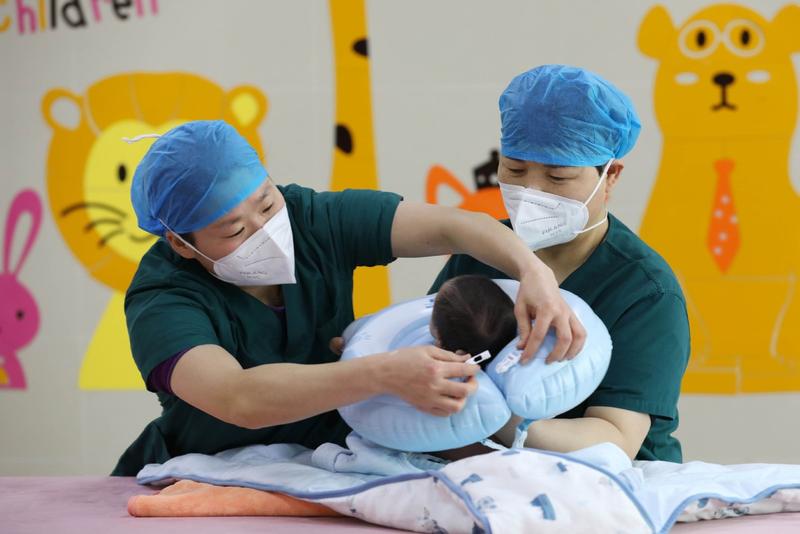 Nurses takes care of a newborn baby at a hospital in Baofeng county, Henan province, Jan 21, 2023. (PHOTO / XINHUA)
Nurses takes care of a newborn baby at a hospital in Baofeng county, Henan province, Jan 21, 2023. (PHOTO / XINHUA)
Yuan said, "We will witness an early phase of negative population growth during the decades to 2050, but the downfall will be mild and will provide a precious window of opportunity (to encourage births).
"If we can raise the fertility rate to an appropriate level during the initial stage (of negative growth), we have the chance to avoid or lessen the impact of an abrupt decline in the total population," he said.
Projections in a UN report titled World Population Prospects 2022 show that if a fertility rate of around 1.4 is maintained in the long term, China's population will fall slowly to 1.3 billion by 2050, but will be nearly halved to 777 million by the year 2100.
"The next three decades will be vital. We should roll out effective measures to encourage births while the fertility rate is still fluctuating," Yuan said.
However, experts have acknowledged the severity of the challenge faced in raising the fertility level.
Although legal limitations essentially ended with the introduction of the three-child policy and the scrapping of all restrictive measures and fines associated with childbirth in 2021, the experts said couples are now simply unwilling to have more children.
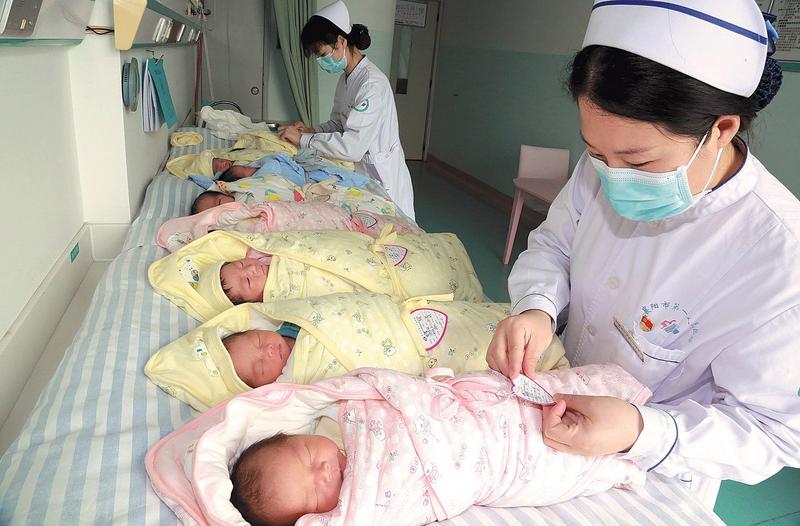 Nurses look after newborns at Xiangyang No 1 People's Hospital in Xiangyang, Hubei province. (GONG BO / FOR CHINA DAILY)
Nurses look after newborns at Xiangyang No 1 People's Hospital in Xiangyang, Hubei province. (GONG BO / FOR CHINA DAILY)
Mao Zhuoyan, a professor at Capital University of Economics and Business, said that for parents, having an additional child means doubling the workload involved in daily care, finding satisfactory nursery care centers and kindergartens, and addressing a range of tasks associated with children's education and medical needs.
"For mothers, discrimination in the workplace adds to the pressure. Young parents also tend to feel overwhelmed (by parenthood) and have to seek help from their own parents in raising children," she said.
The central and local governments have introduced a series of incentives, including tax cuts, cash bonuses and extending maternity leave, but Mao said implementation of these measures is still at an initial stage, and more comprehensive and concrete action should be taken to encourage couples to have children.
Last month, the government in Shenzhen, Guangzhou province, said couples having a third child would be eligible for a cash allowance of 19,000 yuan ($2,825) until the child reached the age of 3. Public opinion is being sought for this measure.
The subsidies for having a first and second child would be 7,500 yuan and 11,000 yuan, respectively, the government said.
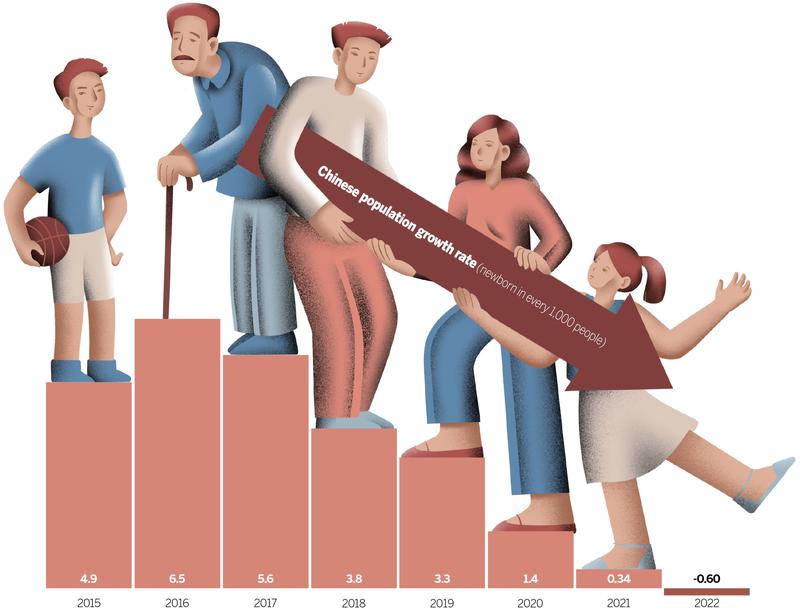 (SOURCES: WWW.POPULATIONPYRAMID.NET/INDIA/2022/, WWW.CHYXX.COM/INDUSTRY/201809/679836.HTML, NATIONAL BUREAU OF STATISTICS, UNITED NATIONS WORLD POPULATION PROSPECTS, NATIONAL HEALTH COMMISSION, 7TH NATIONAL CENSUS, STATE COUNCIL INFORMATION OFFICE, WORLD HEALTH ORGANIZATION, MINISTRY OF HUMAN RESOURCES AND SOCIAL SECURITY, MINISTRY OF CIVIL AFFAIRS, MINISTRY OF EDUCATION)
(SOURCES: WWW.POPULATIONPYRAMID.NET/INDIA/2022/, WWW.CHYXX.COM/INDUSTRY/201809/679836.HTML, NATIONAL BUREAU OF STATISTICS, UNITED NATIONS WORLD POPULATION PROSPECTS, NATIONAL HEALTH COMMISSION, 7TH NATIONAL CENSUS, STATE COUNCIL INFORMATION OFFICE, WORLD HEALTH ORGANIZATION, MINISTRY OF HUMAN RESOURCES AND SOCIAL SECURITY, MINISTRY OF CIVIL AFFAIRS, MINISTRY OF EDUCATION)
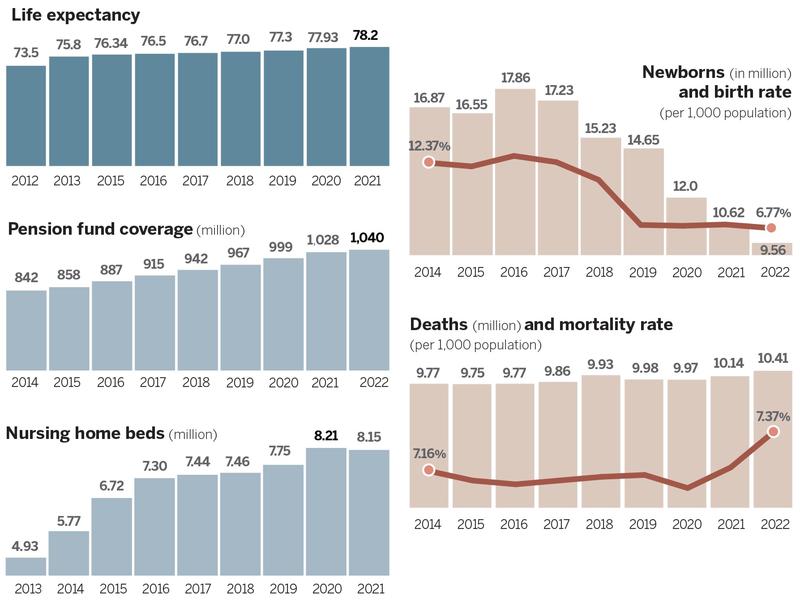
However, Ma Li, 29, who lives in Shenzhen and is planning to have her first baby in the coming years, is reluctant to have a second or third child. She said the allowances offered have affected her decision.
"The time and energy we need to invest in raising one child is overwhelming, let alone two or three. The most effective incentive would be to give me an apartment," she said.
Ma added that despite appealing for more affordable nursery care services to be provided in recent years, she has rarely seen employers offering to equip workplaces with such facilities.
"I am also looking forward to assisted fertility procedures being reimbursed in the future. Many people wanting a second child are in need of such services," she added.
Mao said action needs to be taken now to adjust to new trends, such as delaying marriage and having children.
"For example, the increasing number of high-risk pregnancies means that more women are undergoing costly prenatal examinations, and more couples are also seeking fertility treatment. Such services are not included in medical reimbursement plans," she said.
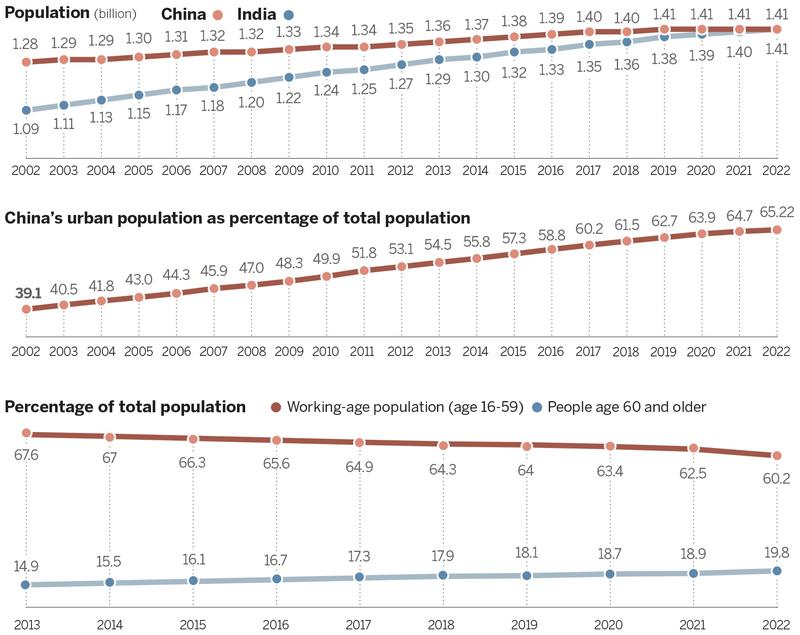
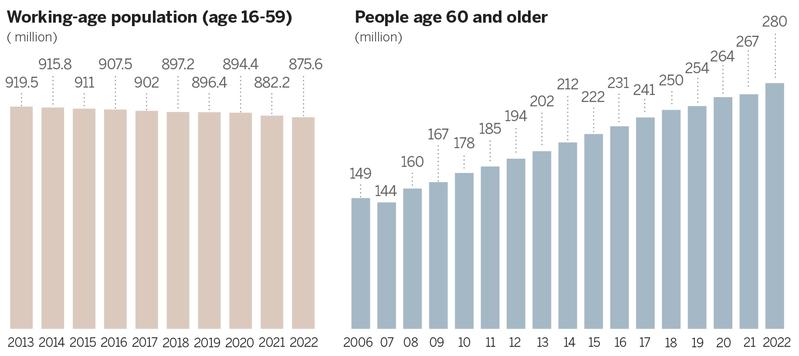

Mao added that it is important to increase willingness among young people to get married, and guide them in starting a family at recommended ages.
Song Jian, a professor at Renmin University's Population Development Studies Center, said boosting the fertility rate is the only way to address a population decline.
"Over the years, the burden of looking after the elderly and young children has shifted to families themselves. Such a burden, coupled with workplace pressures, has deepened anxiety and even fear about marriage and childbearing," she said.
Yuan, from Nankai University, said: "Many young people are unwilling to marry, and are choosing to stay single or have no children. Their perspective on marriage and childbearing has changed a lot from that of previous generations."
He suggested that the precise needs of young people should be determined so that they can be persuaded to change their views on marriage and having children.


